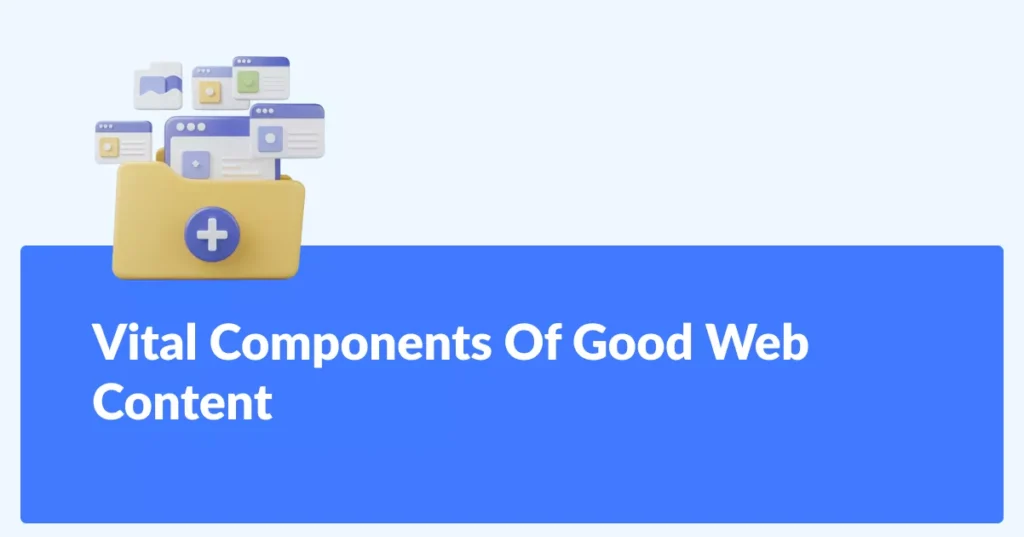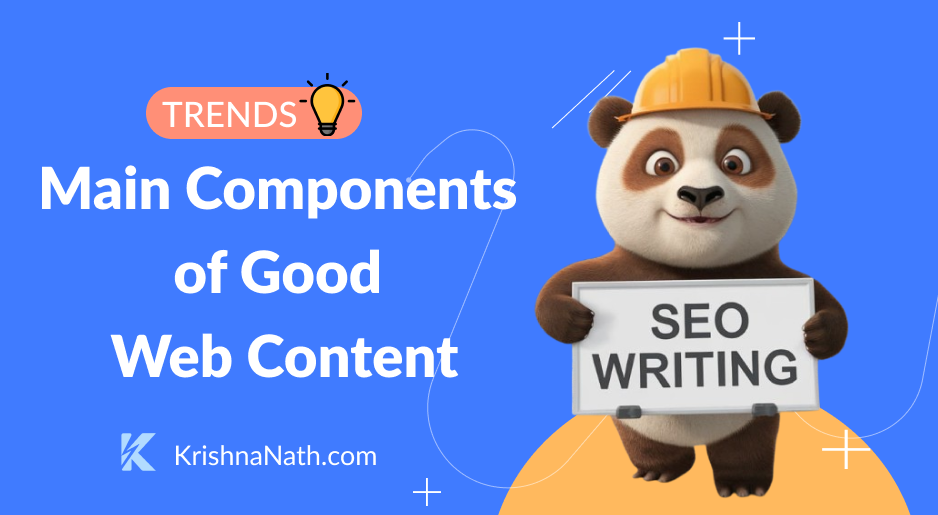As SEO and algorithm updates are updated regularly, writers and marketers must adapt to new practices to produce SEO-optimized and EEAT-friendly content.
For that, you must optimize your content that align with proven SEO strategies and incorporate key components for higher rankings. Also, good web content focuses on delivering user-focused information by implementing main components.
This blog highlights 7 major components to writing optimized web content.
7 Major Components of Good Web Content?

Writing optimized web content requires several vital practices, from doing technical stuff to writing paragraphs to optimizing images. Below are some key components
- Keyword Research
Conducting proper keyword research and incorporating relevant keywords is the core and essential component for writing proper content and securing a higher position on the SERPs.
Keyword research enables us to choose the most searched queries, organize your keywords, and compose an SEO-optimized article.
2. Purpose of the content:
Secondly, you need to define the goals and purpose of the content to select a content genre. For example, there are many types of content forms, including review articles, how-to articles, comparison articles, listicle articles, etc.
If content aims to educate people, it will fall under the category of informative or how-to articles. And, this format of informative articles is entirely different from others. That’s why clearing the purpose of the content is important.
3. Knowing the Audience:
Not only do you need to focus on a target audience but also pinpoint their demographics, interests, needs, and pain points so that you can come up with proper content strategies that live up to users’ demands.
4. Quality Content
Content quality is the supreme component that entirely decides whether Google is going to take into account your content or not. You must hold onto the Google EEAT algorithm that involves authoritativeness, experience, and trustworthiness.
Henceforth, you need to showcase your experience and expertise in your content, making it a real problem-solving source, rather than just keyword stuffing.
5. Engaging Content:
Not only do you have to be in-depth, information-rich, and valuable with your content, but also engaging and entertaining so that you keep the attention of your audience till the end of the content.
6. Visual Content
As per Forbes’ studies, about 91% of consumers prefer visual content over text-only content. So without any doubt text content, comprising attention-grabbing thumbnails, infographics, charts, screenshots, etc, demonstrates complex topics and helps readers comprehend any topic, comparatively increasing content engagement.
7. SEO Optimization:
To rank higher on Google and maintain that ranking for a long long time, you need to incorporate some sound SEO strategies that include On-page, Off-page, Technical SEO, and Local SEO rules.
Customizing your article by adhering to all the On-page SEO rules is the primary step to take into account. Secondly, we can focus on Off-page SEO techniques like guest posting, link building, etc.
In addition to these, applying technical SEO and local SEO to your content will skyrocket your ranking.
In Conclusion:
In Conclusion
Prioritizing these seven components, including keyword research, audience understanding, and SEO optimization, can help you create content that ranks well and delivers value. To maintain relevance and impact, stay adaptable to evolving SEO trends.

